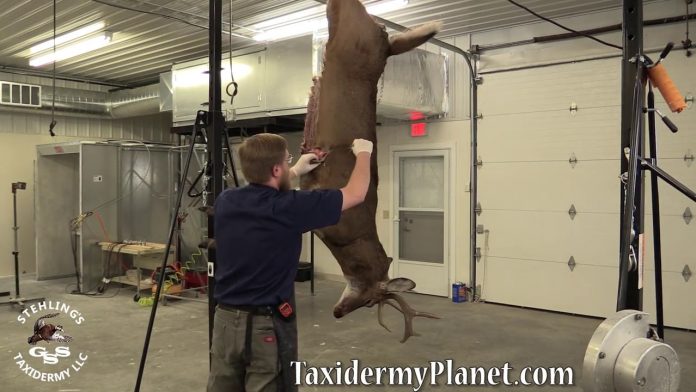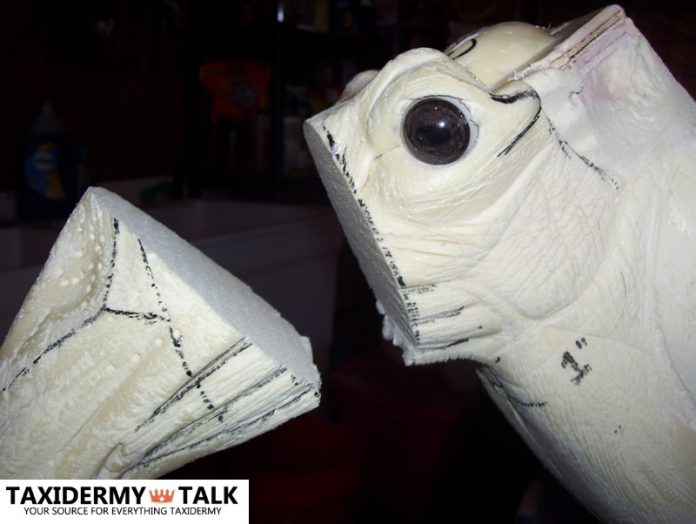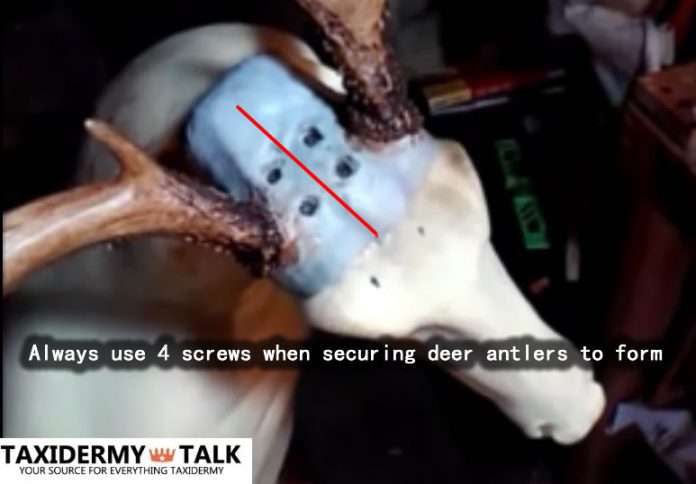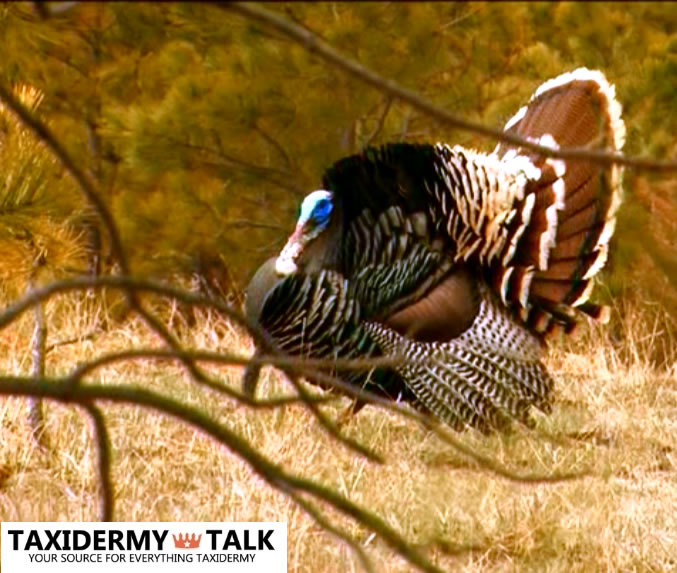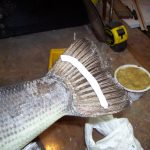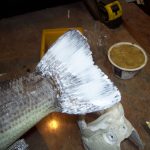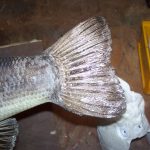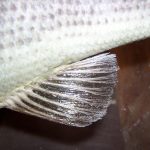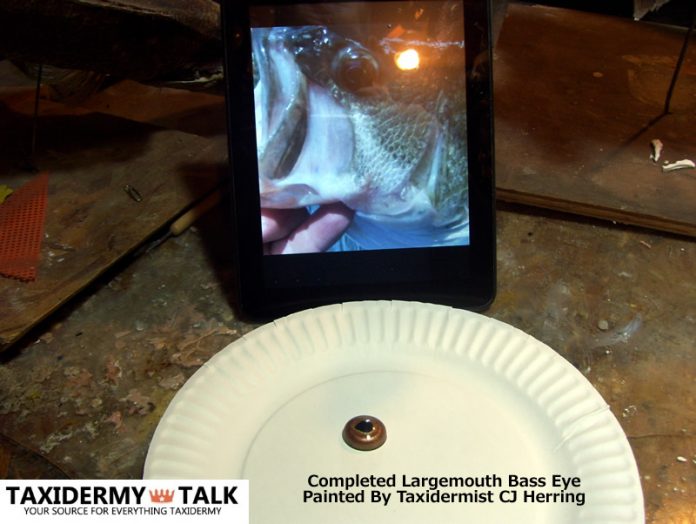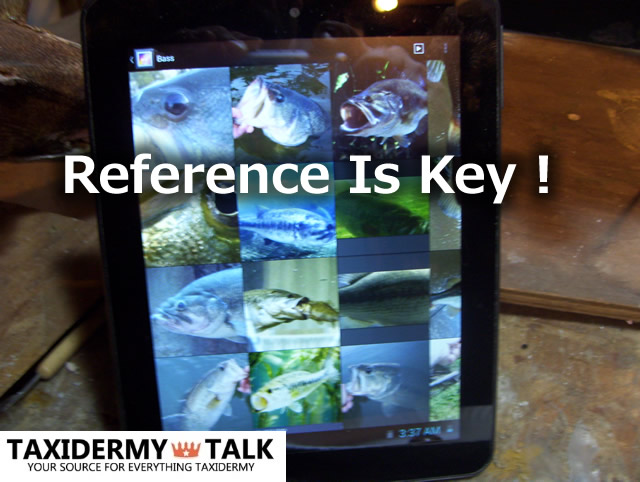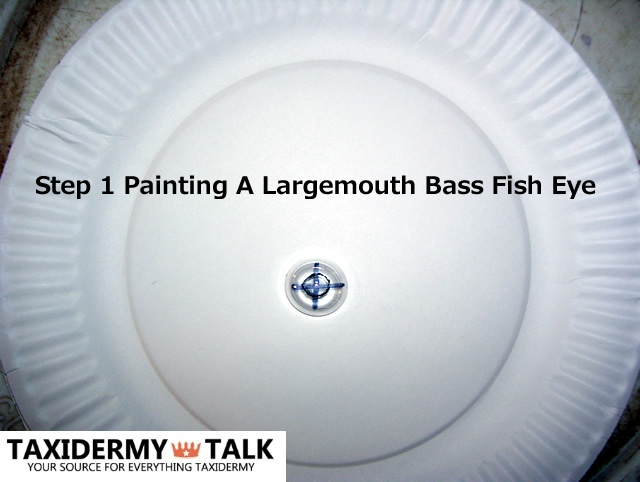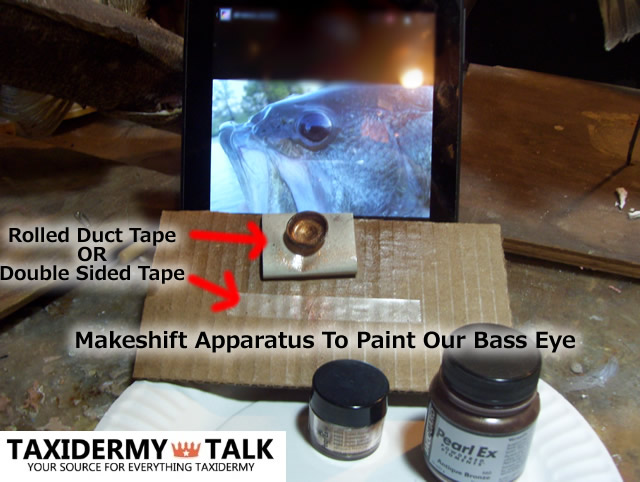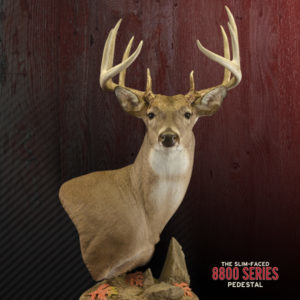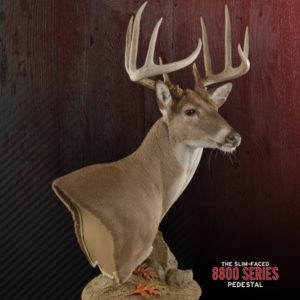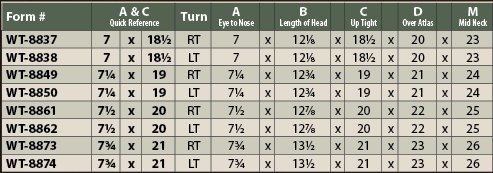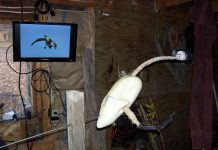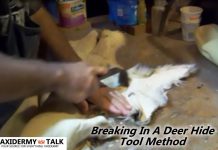Central New York Taxidermy
There are many central New York taxidermy shops located in the big apple but the one we will be focusing on is located within the Leatherstocking region. Cliffords Taxidermy has been providing taxidermy services to central New York for over two decades now. Located near Oneonta and Cooperstown, NY in Otsego County, Cliffords Taxidermy is the place to go to when it comes to central New York taxidermy.
Cliffords Taxidermy services all of Otsego County and provides taxidermy services to those who live and hunt in Chenango, Herkimer, and Delaware counties of New York State.
Taxidermy services provided by this central New York taxidermy facility includes, big and small game taxidermy, deer taxidermy, bear taxidermy, fish taxidermy and bird taxidermy. Cliffords Taxidermy also provides animal hide tanning, both hair on and hair off.
Taxidermy prices are not listed on Cliffords Taxidermy website but the average central New York taxidermy price range on deer heads is in the $600 range. Bear heads are also in the $600 range. European mounts averaged $300. Turkey taxidermy anywhere in New York State is usually within $600 to $800. Average fish taxidermy prices in New York are anywhere from $18 to $25 per inch.
Average return time on most taxidermy mounts from Cliffords is 12 months. Cliffords Taxidermy uses nothing but the best when it comes to taxidermy supplies and manikins. They take no short cuts or cut costs just to get your trophy out the door.
So if you’re hunting or fishing in central New York this season and need central some New York taxidermy services why not give Cliffords Taxidermy a call.
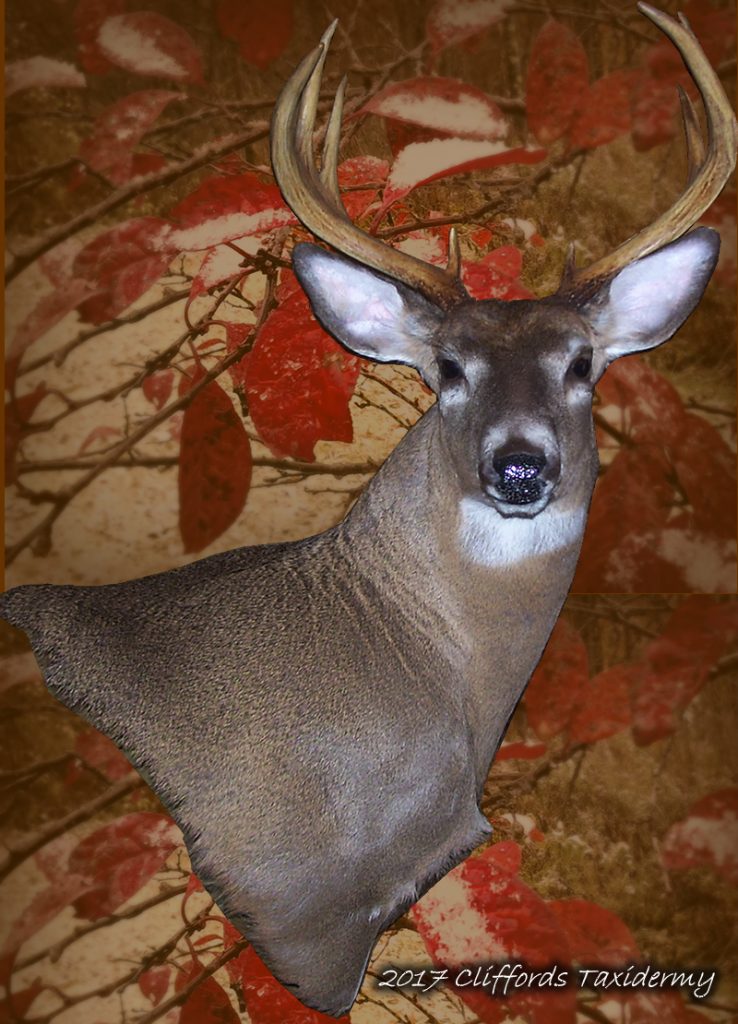
Altering a Whitetail Deer Form
There is a misconception amongst most people that the deer forms manufactured and shipped to taxidermists today are all one size fits all. That any pose so desired is available. This could be so far from the truth. Half of the work involved in mounting a deer head is sometimes put into altering the form or as some refer to it as altering the deer manikin. If you mount deer chances are you will be altering a whitetail deer form at some point of your taxidermy career.
When I use the term altering a whitetail deer form I am referring to the work and process that is done in changing, reconstructing the original physical appearance of the delivered deer manikin. There are many reasons on why a taxidermist must alter and change the appearance of a deer manikin that they are working on. The form may be too big or too small. The turn in the head may not be as much or too much of a turn. The nose on the deer may be too long or not long enough. Perhaps the nose on the deer is too wide or too narrow. The list goes on and on.
Altering a whitetail deer form maybe intimidating to some and in some cases overwhelming. You may have to remove the entire head or actually cut off the whole neck of the form. Sanding and sculpting is a requirement for anyone who attempts to alter (modify) a whitetail deer manikin.
It is very important to test fit your capes to the deer form before mounting up. Chances are at some point you will have to alter the deer form to get the cape to fit properly. Sometimes we taxidermists goof and order the wrong form. Instead of sending the form back while wasting time and money, we will just fix the mistake by altering the deer manikin.
I personally have done dozens of whitetail deer form modifications over the years. Anything you can think of being done to a deer manikin to alter it probably has been done by me at some point. I have taken shoulder mounts and turned them into wall pedestals. I won’t even mention all the nose length modifications I have done. Changing the pose of the deer has been done more than once. The list goes on and on. I will also guarantee you many other deer taxidermist can relate to altering a deer form.
Altering a deer form is not rocket science. If you think you are going to just throw a cape on every single deer manikin delivered to your shop, and be done with it, I got news for you. You need to be handy with a saw and knife and have sculpting capabilities.
Just recently I completed a whitetail form alteration on a McKenzie 6900 series wall pedestal. The deer manikin had a hard right turn look and I made it into a full straight look. You can read all about it along with the step-by-step procedures I used by visiting Whitetail Form Alteration By CJ Herring
Securing Deer Antlers Using The Four Screw Rule
Over this past summer the phone rang here at my taxidermy lab and on the other end was a worried voice. The caller stated that their deer head fell off the wall and now they had a loose antler. They assured me that they believed the skull cap cracked under the cape but were lost for words on way it wobbled but yet still seemed to be attached. I replied by stating that their problem is probably due to how their taxidermist is securing deer antlers. Immediately their replay was “what do mean securing antlers?” At that moment I remembered that most people think we use the whole skull of the deer when mounting deer and not just the skull cap.
After explaining that their taxidermist could most likely fix the problem I was then informed their taxidermist, the one who mounted the deer was no longer in business. The caller couldn’t understand why they went of the business because their deer mounting price was the best in town. Once I learned about the taxidermist who went of business only charged their clients $350 to mount deer I didn’t need to hear any more on why someone with great taxidermy prices could possibly go out of business.
Once I informed the caller it would be a minimum of $100 to walk that deer head into my shop just for me to look at it and possibly do something to fix it, the phone call abruptly ended. Every taxidermist I know who has been in business for some time has received this type of phone call more than once.
I don’t have a clue what the taxidermy schools of today are teaching their students when it comes to securing deer antlers to the deer form. I really don’t and what they teach is their business. However I do have a sneaky suspicion that most taxidermists today secure their deer antlers using only 2 or 3 screws at most. Which is more than enough to hold the antlers in place, but I can tell you right now that it could be recipe for disaster down the road for your client. I can actually count on one hand who has told me over the years that they use and would also recommend the 4 screw rule when securing deer antlers.
If the skull cap under the clay and cape would to ever split down the center (weakest part of the cap) and you used four screws, chances of it wobbling or becoming loose will be very slim to none. Don’t ever take for granted that the hardened clay and dried cape over the skull cap will be enough to keep everything in place by getting away with using 2 or 3 screws. One good bang and it can all come apart.
Turkey Reference Pictures For The Taxidermist
If you’re going to mount turkeys as a taxidermist, then you better get yourself some good turkey reference pictures. Turkey taxidermy can be intimidating for most upcoming and aspiring taxidermists. This does not have to be the case at all, as good reference pictures will guide you the way. If you have any concept of bird anatomy and have mounted other upland game birds you’ll have no problem when it comes to mounting turkey as long as you study turkey reference pictures. Always have turkey reference pictures on hand ready to go when mounting turkeys, no matter how many turkeys you may under your belt.
While viewing and studying reference pictures you should make notes on the tail fan, breast feathers, the head position and color of the head, the pan feathers which are located directly behind the head, the rear hackles and most importantly the scaulps which fill in the space between the wing and back hackle feathers.
Take notice on the angle and tilt of the tail fan when observing turkey reference pictures. Notice in most strutting birds the tail fan is not straight up and flat as you will see in most turkey mounts being produced by amateur taxidermists. Study the wings and the wing tips and the position of the secondary feathers on the wings. Take notice on the legs. Do any of the drumsticks show on a strutting turkey? When a turkey walks how far apart is the left leg to the right leg? When turkey gobbles, is the head up or down or at what angle? All of these questions can and will be answered by studying turkey reference pictures.
A great source for live turkey reference pictures would be Google Image Search.
Sealing Fish Fins 101
True story, many years ago before I knew better I bought some fin backing cream from a reputable taxidermy supplier for sealing fish fins. It arrived in a caulking tube and had its own label with the suppliers name on it. One day by accident I dropped the tube in a bucket of water and the label peeled right off. Underneath the real manufactures name and product was revealed. It was then I learned, all I had bought was a relabeled tube of acrylic caulk that was sold in any Home Depot or Lowes for 3X the amount I could have gotten it for locally.
I’m sure you’ve heard the saying that there are a million ways to skin a cat. Whoever came up with that quote and why is beyond me, or why a cat was used in that analogy. Nonetheless that quote applies day in, day and day out in the world of taxidermy. Pun intended I guess if you think about it.
Taxidermy and skinning is like bread and butter, but you wouldn’t think sealing fish fins and caulk would fall into the same adage. But like the old legendary quote goes, there are a million ways to skin a cat so let’s get going here.
If you’re an old school fish taxidermist you’re most likely still using the real fins on your fish. Modern day methods have pushed towards artificial reproduction fins which are usually molded and cast from the original fish. When this method is used there is no need for sealing fish fins for protection.
When our fish fins dry out after mounting, they become very brittle and fragile. They will break, bend and tear with little force. The edges of our fins are most vulnerable to damage. Sealing fish fins prevents this and adds life back into our fins.
For this article I need you to forget all you have learned or read over the years on sealing fish fins. My approach to sealing fish fins is not what they taught you in taxidermy school. I never played well with the thought, that you must use a taxidermy grade fin sealer bought from a taxidermy supplier. And here is something else I’m still trying to wrap my head around and that is those backing their fins with material like silk span. I guess you can claim its done for fin repair, but I have done hundreds of fin repairs without ever using a backing. If your spiny dorsal fin was missing some of its soft rays, I’ll give you the backing to rebuild, but for other holes and tears you just don’t need it.
All of my fish fins done over the years which would number thousands of fins, whether fresh water or salt water, have been sealed using Ace’s brand of their clear acrylic caulk. It comes in a tube and comes out white, so make sure you pick up a caulking gun. When dried it is as clear as any fish fin cream I have seen sold. This caulk has very good adhesive properties and builds up the fins very nicely. Giving your fish fins that meaty look when dried.
When completely dried the fins are strong and durable with flexibility. I have also never had a problem with any water color or lacquer airbrush paint adhering to the fins during the painting process. In 20 years I have never had one customer ever complain or call back because they had fin issues with their mount.
Over the years I have had conversations with other fish taxidermists who show concern over using clear acrylic caulk. Mostly other brand types have been the topic and the most complaint heard is that it doesn’t dry totally clear. I have yet to meet or talk to anyone who is using Ace’s line of clear acrylic caulk and I’m telling you now it dries clear as anything I have seen come out of the taxidermy supply houses.
The fins pictured in this article show the process and results. I normally give my fins at least 2 coats sometimes three. The warmer it is in your studio the quicker it dries. For best results wet your paint brush prior to spreading out the caulk. This will make cleanup of the brush much easier when done. A wet brush will also spread out the caulk evenly and smoother then a dry brush. Wipe your brush off in-between fins so you don’t get excessive build up between the bristles. Both sides of the fins get hit with the caulk and any holes or tears will be filled in easily. Do not apply too heavy on the fins edge and I recommend not trimming the fins edge. Natural looking fins are best left alone. There is just something about trimmed fins that irk me.
Painting a Largemouth Bass Fish Eye
The advantage of painting a largemouth bass fish eye is that you can look at reference and paint accordingly to what your reference is telling you. However commercial fish eyes are just fine for taxidermy and are the industry standard for taxidermy studios across the country. But when painting a largemouth bass fish eye you are able to change pupil sizes along with color variations depending on your fish you are mounting. Having the flexibility and total control of how your fish eye looks is what sets you apart from the rest of the fish taxidermists of the world. Before you can even start you will need to buy Jeff Lumsden’s Still Life Eyes from McKenzie Taxidermy. When buying lenses, buy multiple sizes so you will be stocked up and ready to go no matter what fish is delivered to your taxidermy shop for fish taxidermy. You will never ever have to wait for a fish eye order to come in again, because you will be stocked up on fish eye blanks.
Before we start painting a largemouth bass fish eye go to Google Image search and search for largemouth bass pictures. Look for pictures that focus in on the head and eye. You may have to play around with the search query to find exactly what you’re looking for. When you click on a good reference pic as I have described, Google will show you similar pictures to the one you just clicked on. Click on the view more link below the file name. A new page of Google Images will be shown and most if not all will resemble your original reference picture of choice. Pick out four of the best pictures that give you a good reference of a largemouth bass eye. Download them to your tablet, phone, PC or whatever you are using in the shop to aid you in taxidermy reference pictures. If you have a Wi-Fi printer in the shop or home, print them out and then laminate them. This way you will be set for life, and be able to pull those pics out anytime you paint a largemouth bass eye. Another way to get good reference pictures is to go out and go fishing. Take close up pics of the bass you catch and transfer the pictures to your iPad or tablet.
With all that out of the way and our reference pictures in hand let’s get to painting a largemouth bass eye.
Step 1: Draw a crosshair on the outside of the eye with a thin Sharpie black marker. The crosshairs should cross each other dead center of the eye, which will be the center of our pupil. Next by looking at our reference, draw a pupil shape on the same side of the eye. Pupils in a fish eye are not round. Some are a soft almond shape forward with a soft round curve in the rear. Some are more defined forward. If you’re unhappy with your pupil shape wipe off the marker with some rubbing alcohol and repeat this step until you get it right. Never use any harsh chemicals on the lenses. Alcohol or Windex will be enough. An important step here is not to oversize the pupil. The pupil should be no more then 1/3 in size to relation to the iris.
Step 2: We will now take a paint marker and trace the pupil on the inside of the eye. In other words trace over the Sharpie you drew on the outside of the eye, but do this on the inside of the eye. If all looks good then remove the marker from the outside of the eye. Do this by using a paper towel and rubbing alcohol.
Step 3: Go ahead and fill in the rest of the pupil using your paint marker. Again we are painting the inside of the eye. If you go outside of the traced pupil edge with the paint, don’t freak out just yet. Yes our pupil should exhibit a clean and crisp edge all the way around. When the paint is dry you can use a tooth pick to clean up the edge. Or if you prefer you can use a Q-Tip with some alcohol. Either way works. We must have a clean sharp edged pupil before we can go forward. So let’s be sure we are there before going forward.
Step 4: Before we move forward, we need to secure our eye so we don’t handle it as we proceed. To do this you can buy some double sided tape, or just use a plain piece of duct tape rolled into a loop. Get a piece of cardboard and stick the tape to it. Now stick your eye to the tape so the inside of the eye is facing up. Next take some sealer, in our case lacquer sealer, and seal down the pupil. We will then dry the sealer with a hair dryer.
Step 5: If we look at our largemouth bass reference pictures we will see that the pupil has a gold ring around it. We will recreate this gold ring by using a gold metallic fine tipped paint pen. Again we are looking for a crisp clean ring around the pupil. The key here is that we want our gold ring to be thin as in our reference pictures. If you have to clean the edge you can do so with a sharp tooth pick, like we did with our pupil. Once complete go ahead and seal it with your lacquer sealer followed with drying.
Now we are at the part where we start to add all of the rest of our color variants and depths. If you look at your references you will know that most largemouth bass eyes vary in color. It may depend on the region where the fish was caught, the water temperature and time of year caught. Every bass eye will have variations and depths of browns, including metallic browns and gold’s. So with that in mind there really is no universal way of painting a largemouth bass eye. The bottom line is, go with your reference that you downloaded. Better yet, ask the angler that caught the fish if they have any close up pics of the fish, particularly the head. This way you are sure to get it right when painting the eye.
From here forward we will be using dry powders to complete our largemouth bass eye. Pearl Ex and Neuberg Ebel powders are what we use here in our taxidermy lab to get the job done. The following procedure that’s about to be offered is not set in stone. It is just a guideline on how we achieve the results we are after in painting a largemouth bass eye. Some taxidermists will actually airbrush a good portion on the eye and do well at accomplishing the same effects.
Step 6: Going by our largemouth bass eye reference we have chosen Pearl Ex Antique Bronze #660 as our base color. This is applied dry, straight from the jar with a small artist brush. We will put this color over the pupil and completely inside the base (flat part) of the eye known as the iris. We will once again seal the eye with our lacquer before heading to the next step.
Step 7: By going over the Antique Bronze blotch in some Pearl Ex Super Bronze #664. Don’t overdo this step. We just want to add some depth and charter to the Antique Bronze. To get the full effect of your work remove the eye from the tape, flip the eye over and lay on a white background. If you hold the eye up to a light, it will be transparent and probably not very attractive. But give it a drop back and the eye comes to life. How does it look so far?
The next step will most likely be the last step for most of us. However if your bass eye reference exhibits any of the gold’s or silver that can at times be found in a bass eye don’t hesitate to add them in. For example we have seen some bass eyes show a hint of silver in the lower 1/3 front. However we would have added this color first before the antique bronze. Any gold can be added after the bronze. Just be sure to seal in-between colors.
Step 8: We will now shadow the rim of the iris to the edge of the lens by brushing in some Neuberg Ebel Statutory Bronze #47. If your eye is still secure to the tape hold it sideways and rotate while powdering the rim. Seal it down with your lacquer. When done remove the eye from the tape, and place the eye onto a white background. Now watch as your custom painted bass eye comes to life.
Congratulations you have just painted your first bass eye. The featured image at the the top of this page shows our completed bass eye.
The all new 8800 Series Pedestals from Reasearch Mannikins !
The all new 8800 Series Pedestal Whitetail from Bill Lancaster are now
available from Research Mannikins, Jim Allred, and Trufitt. The 8800
Pedestal has the same alert and forward look as the 8500 Series
Semi-Sneaks, 8600 Uprights, and 8700 Wall Pedestals. All of these are
shipped from Illinois, North Carolina, and Utah at an affordable cost. Featured pedestals range in cost from $52.70 – $60.45. Priced significantly
lower than other Pedestals.

